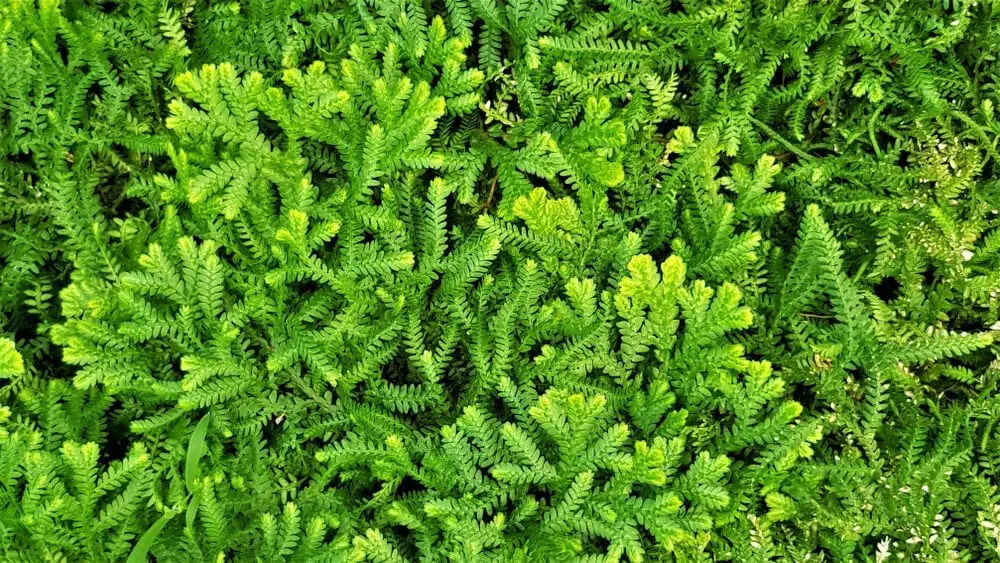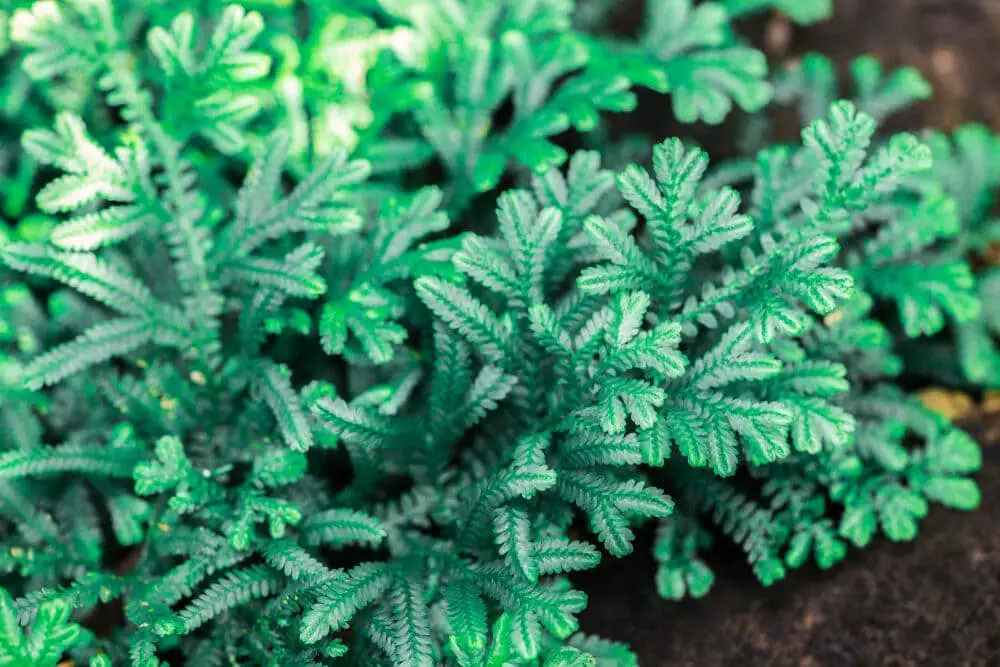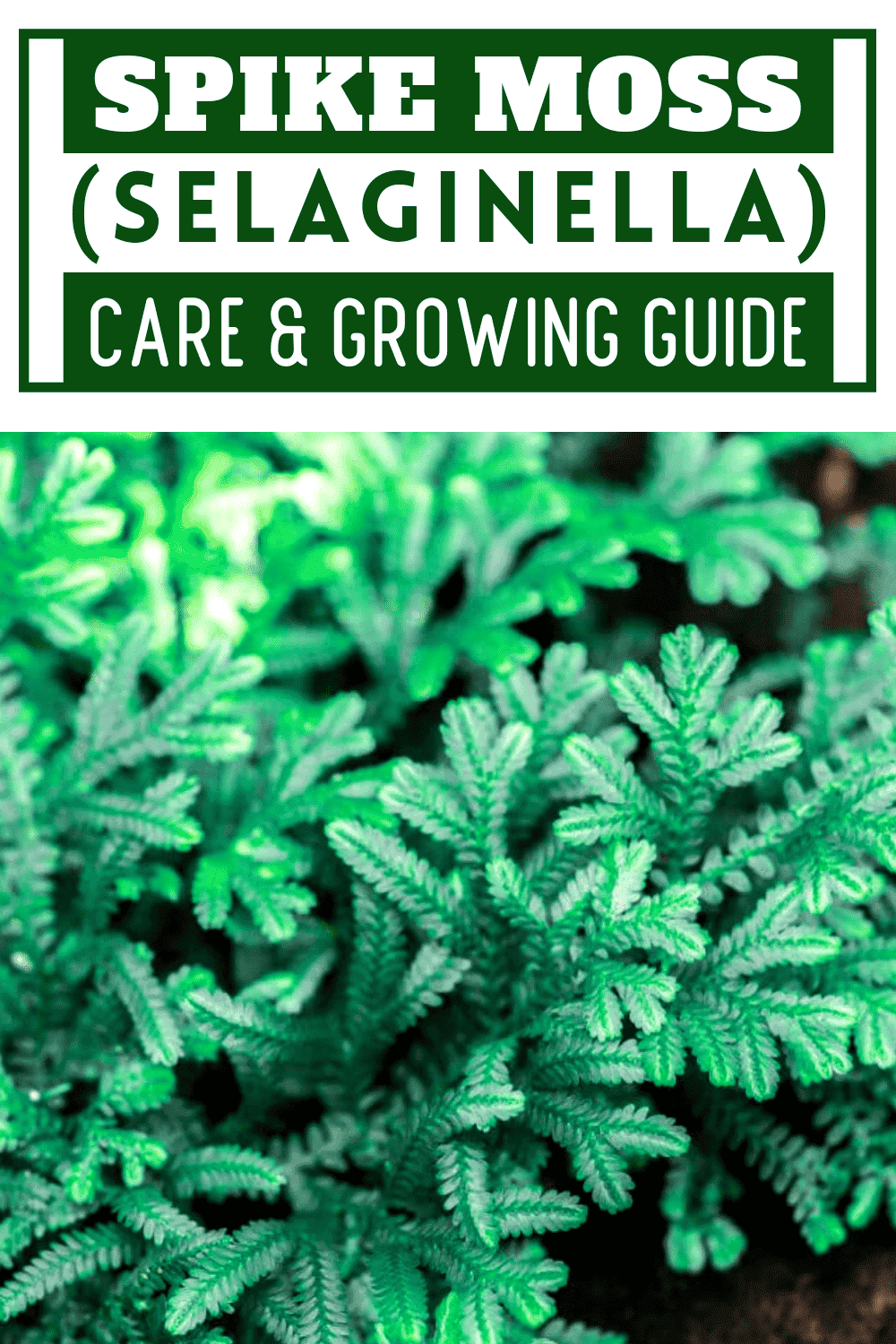Spike Moss is an interesting plant that is perfect for complimenting your garden area.
While this plant has quite a bit in common with ferns, there are also a number of unique characteristics. This is definitely one type of plant that you’ll want to consider growing for numerous reasons.
Spike Moss Care & Growing Guide
1. Light Requirement
If you are going to keep this plant indoors, you’ll want to put it in an area that receives bright filtered light. You can keep this plant close to a curtained window that faces the sun in the afternoon. Adequate sun is crucial for growing this plant and keeping it as healthy as possible.
You can keep this plant in partial shade, provided that it gets lots of light in the morning hours. You don’t want to expose this plant to bright direct afternoon light, as it will end up scorching the leaves. This can lead to a lot of damage to your plant within a matter of days or even hours.
2. Water
You will have to keep the soil this plant is in moist but not drenched. It is imperative that you don’t give it too much water at once, or water it too frequently. This can lead to root rot, which could mean the end of your plant altogether.
If you are ever not sure whether or not you should water this plant, all you have to do is just feel the soil. If the soil feels moist at all, you will want to put off watering it for a little bit. It’s always better to be safe than sorry when it comes to watering these plants.
If this plant gets too dry, it could actually become dormant. You can, however, bring it back to life by simply giving it a drink of water. Make sure that you don’t give it too much water though, as this could cause root rot.
3. Climate
Spoke moss can be grown in a variety of climates due to its highly adaptable nature. In fact, this plant has no problem coping with colder weather. You can grow this plant in USDA hardiness zones of 6 or higher.
4. Soil
It is a good idea to grow this plant in peat moss-based soil, as it is well-draining but still manages to retain water effectively. This is by far the best soil to grow your plant healthy right from the start.

5. Temperature
It is best to maintain a temperature range of 50 to 75 degrees Fahrenheit for Spike Moss plants. While these plants can deal with colder temperatures fairly well, it is better to keep them warm if at all possible. This plant can be outside in temperatures all the way down to 40 degrees Fahrenheit without any issues.
One of the best things about this type of plant is that it can be kept outside throughout the entire year in most regions. If you decide to take this plant inside at any point, make sure that you don’t keep it by any heating vents. This could dry the plant out to the point where it cannot recover.
This plant can withstand cold temperatures of up to 0 degrees Fahrenheit, which is impressive to say the least. The fact is that you won’t find many other plants that are quite as durable and adaptable as this one.
6. Repotting
Repotting is not necessary very often with Spike Moss. You’ll want to put it in a container that is about one size larger when it starts to outgrow its current container. You should only have to do this once every couple of years or so.
7. Speed of Growth
Spike Moss grows fairly quickly in warm weather with bright sunlight, but it has a resting period in the winter months.
8. Height and Spread
These plants can grow anywhere from 7 to 9 inches tall with a spread that is just about the same.
9. Flowers
Because the Spike Moss is a spore plant, it actually doesn’t produce any flowers.
10. Trimming
When you want to control the size of your spike moss, you can cut the stems back. Just pinch the stems back, and the plant will produce new growth at its base. Make sure that you take care of any dead or dying stems or foliage as well.
Pruning will help this plant produce new growth, so you’ll want to keep that in mind. While it is rarely necessary, it can be quite helpful. If you want to stimulate growth, you’ll want to cut back the stems.

Common Spike Moss Diseases
Both mealy bugs and spider mites can be a problem with spike moss. This type of plant doesn’t attract a lot of different pests, but the ones it does can do a lot of damage.
If you want to put a stop to all of the pests that are making trouble with your plants, you can always spray them with a powerful blast of water. There are also organic oils that you can apply to the leaves of your plants to keep them off.
Conclusion
- If you are growing Spike Moss indoors, you should put it by a curtained window that receives bright light in the morning and afternoon.
- If this plant is outside, it should be in an area that receives some shade from the blazing afternoon sun.
- Just feel the soil to determine whether or not this plant needs to be watered. If the soil feels moist at all, you don’t need to give it a drink.
- These plants tend to thrive most at a temperature range of 50 to 75 degrees Fahrenheit.
- Spike Moss is very adaptable and can survive cold temperatures all the way down to 0 degrees Fahrenheit.
- If you ever want to stimulate growth with this plant, just cut the stems back.
- This plant grows up to 9 inches tall with a spread of 8 or 9 inches.
- If you are experiencing any problems with pests on your plants, there are oils products you can use as a deterrent.

Victoria is the owner and main author of hobby plants. She loves spending her free time in her garden planting and taking care of her plants. Victoria hopes you enjoy the content here!
![Queen Of The Night Flower [Complete Plant Care Guide] Queen Of The Night Flower [Complete Plant Care Guide]](https://www.hobbyplants.com/wp-content/uploads/2022/07/queen-of-the-night-flower-300x158.jpg)
![Mother Of Thousands Plant [Complete Plant Care Guide] Mother Of Thousands Plant [Complete Plant Care Guide]](https://www.hobbyplants.com/wp-content/uploads/2022/07/mother-of-thousands-plant-300x158.jpg)
![How Often Should You Water Pothos? [Complete Care Guide] How Often Should You Water Pothos? [Complete Care Guide]](https://www.hobbyplants.com/wp-content/uploads/2022/07/how-often-to-water-pothos-300x158.jpg)
![Can Snake Plants Live Outside? [COMPLETE CARE GUIDE] Can Snake Plants Live Outside? [COMPLETE CARE GUIDE]](https://www.hobbyplants.com/wp-content/uploads/2022/08/can-snake-plants-live-outside-300x158.jpg)
![Majesty Palm Plant Care: [Complete Beginner's Guide] Majesty Palm Plant Care: [Complete Beginner's Guide]](https://www.hobbyplants.com/wp-content/uploads/2022/08/majesty-palm-care-300x158.jpg)
![Exotic Angel Plant Care: [Complete Beginner's Guide] Exotic Angel Plant Care: [Complete Beginner's Guide]](https://www.hobbyplants.com/wp-content/uploads/2022/08/exotic-angel-plant-care-300x158.jpg)
![Do Coleus Like Sun Or Shade: [Complete Care Guide] Do Coleus Like Sun Or Shade: [Complete Care Guide]](https://www.hobbyplants.com/wp-content/uploads/2022/08/coleus-sun-or-shade-300x158.jpg)
![Snow White Waffle Plant: [Complete Care Guide] Snow White Waffle Plant: [Complete Care Guide]](https://www.hobbyplants.com/wp-content/uploads/2022/08/snow-white-waffle-plant-300x158.jpg)
![Waffle Plant Care: [Complete Beginner's Guide] Waffle Plant Care: [Complete Beginner's Guide]](https://www.hobbyplants.com/wp-content/uploads/2022/08/waffle-plant-300x158.jpg)
![Bird Of Paradise Plant Care: [Complete Beginner's Guide] Bird Of Paradise Plant Care: [Complete Beginner's Guide]](https://www.hobbyplants.com/wp-content/uploads/2022/08/bird-of-paradise-plant-300x158.jpg)
![Purple Passion Plant Care: [Complete Beginner's Guide] Purple Passion Plant Care: [Complete Beginner's Guide]](https://www.hobbyplants.com/wp-content/uploads/2022/08/purple-passion-plant-care-300x158.jpg)
![China Doll Plant Care: [Complete Beginner's Guide] China Doll Plant Care: [Complete Beginner's Guide]](https://www.hobbyplants.com/wp-content/uploads/2022/09/china-doll-plant-care-300x158.jpg)